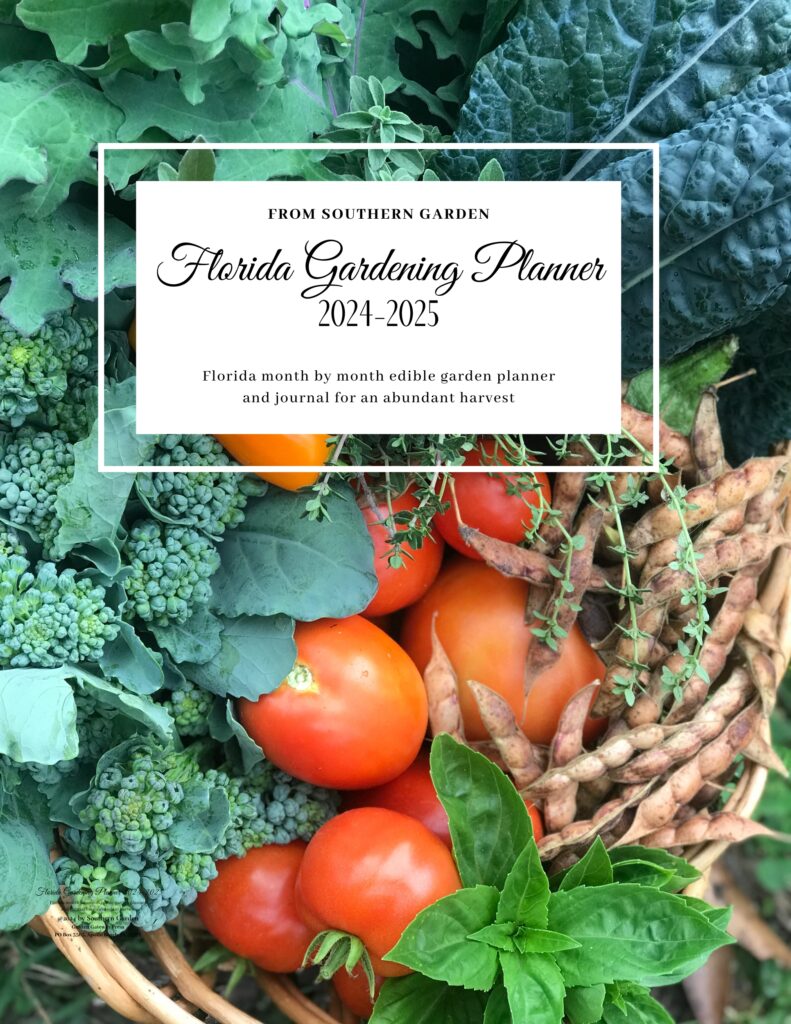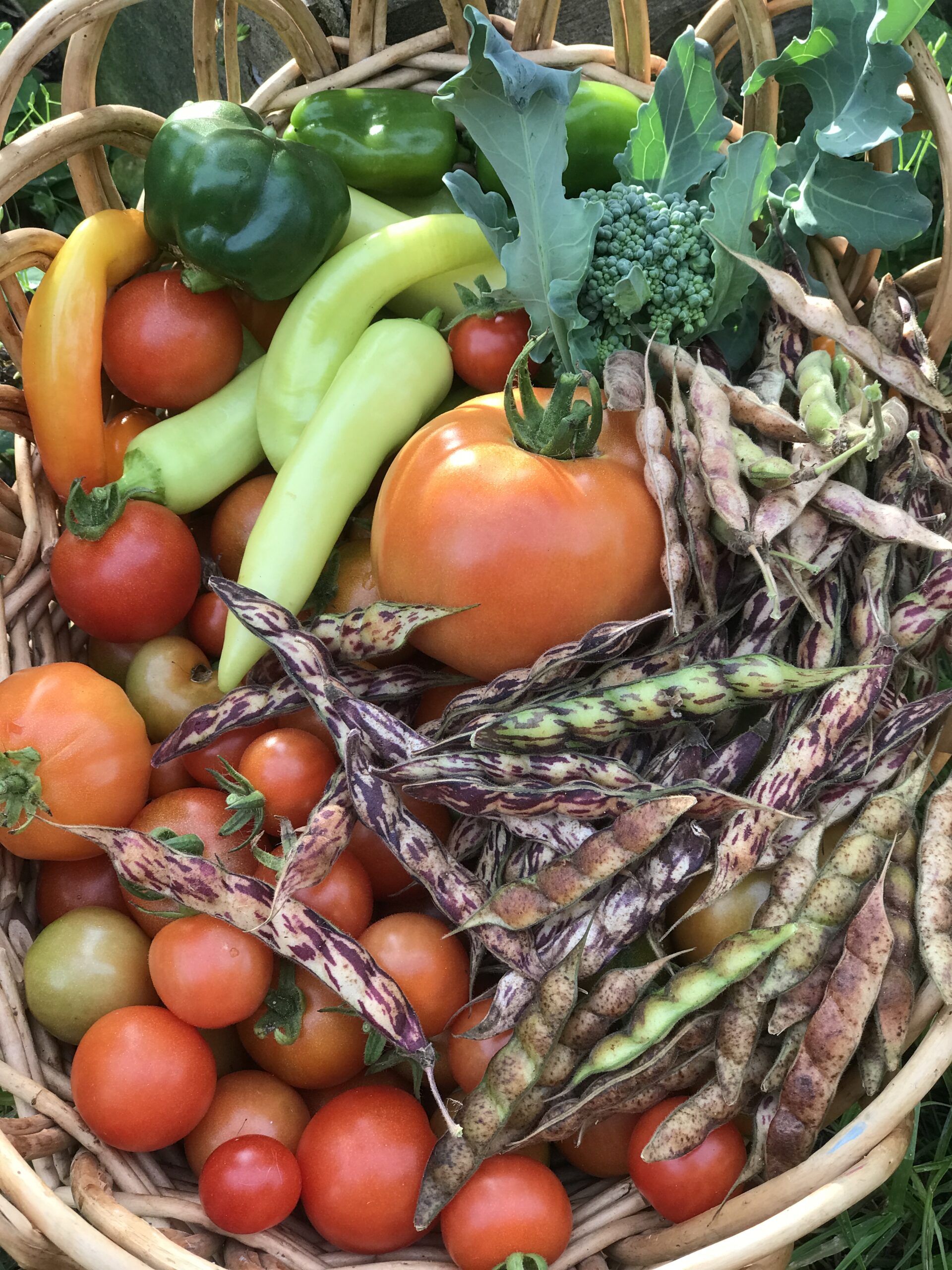
April in Florida isn’t for the faint of heart—or the cool-season crops. The days heat up and spring surrenders to summer with a whimper. So, it’s time to embrace the sun-loving, heat-thriving plants that won’t wither under the pressure. Whether you’re in North, Central, or South Florida, this is the month to swap out those fading winter veggies for those that bask in the heat and humidity. So, grab your trowel, slap on some sunscreen, and let’s talk about what to plant in April in Florida—before the summer sun really starts flexing its muscles.
Plant Heat-Loving Staples in April
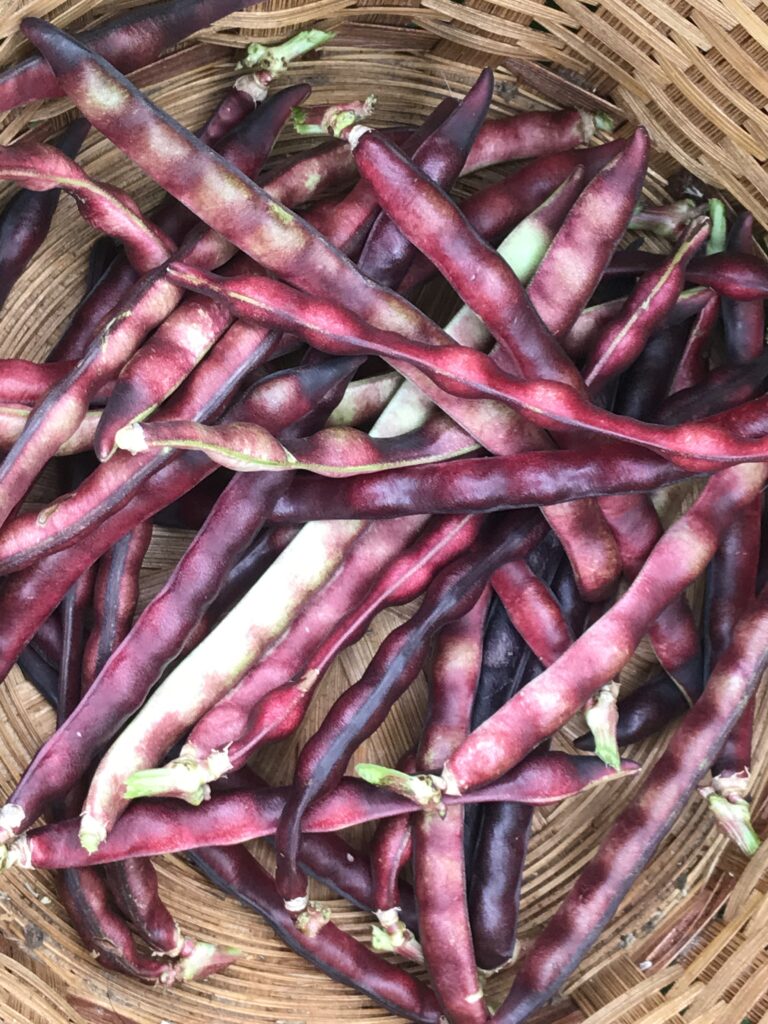
Even in early April, summer starts to creep into our consciousness with midday temps in the high 80s and even 90s. Ironically, this is the perfect time to think about preparing for winter food requirements.
The one thing that still amazes me about gardening in Florida is that we really can grow our own food year round. But
April in Central Florida is the perfect time to plant staple crops. These tough, drought-tolerant crops thrive in the rising heat, and most are low-maintenance. This means you won’t have to spend hours in the hot sun or pouring rain tending to your garden.
Many help enrich the soil while producing a steady supply of food through the summer. Others, help keep it loose and friable, fighting compaction.
Peanuts: Set-It-and-Forget-It
Peanuts (Arachis hypogaea) are one of the easiest crops to grow in Florida, as long as you have enough room. I don’t have enough room for peanuts, but I have to present these as a great option for those that do. They pack so much nutrition into such a delicious legume, they deserve to top the list as a staple crop for the South.
- First Quality Non-GMO Peanut Seeds – Current Lab Test Data Shown on Packet
- Exclusive Gold Vault Packaging – Provides 3X Longer Storage than Paper or Plastic with Triple Layer Mylar Gold Foil.
Peanuts flower above ground but produce their pods underground — a fascinating process you may have observed if your spouse has a bad squirrel-feeding habit like mine does.
Space them a few inches apart in loose, sandy soil, and they’ll take care of the rest. Peanuts need about four to five months to mature, making them a great long-term crop for Florida’s extended warm season.
Southern Peas: True Heat Warriors
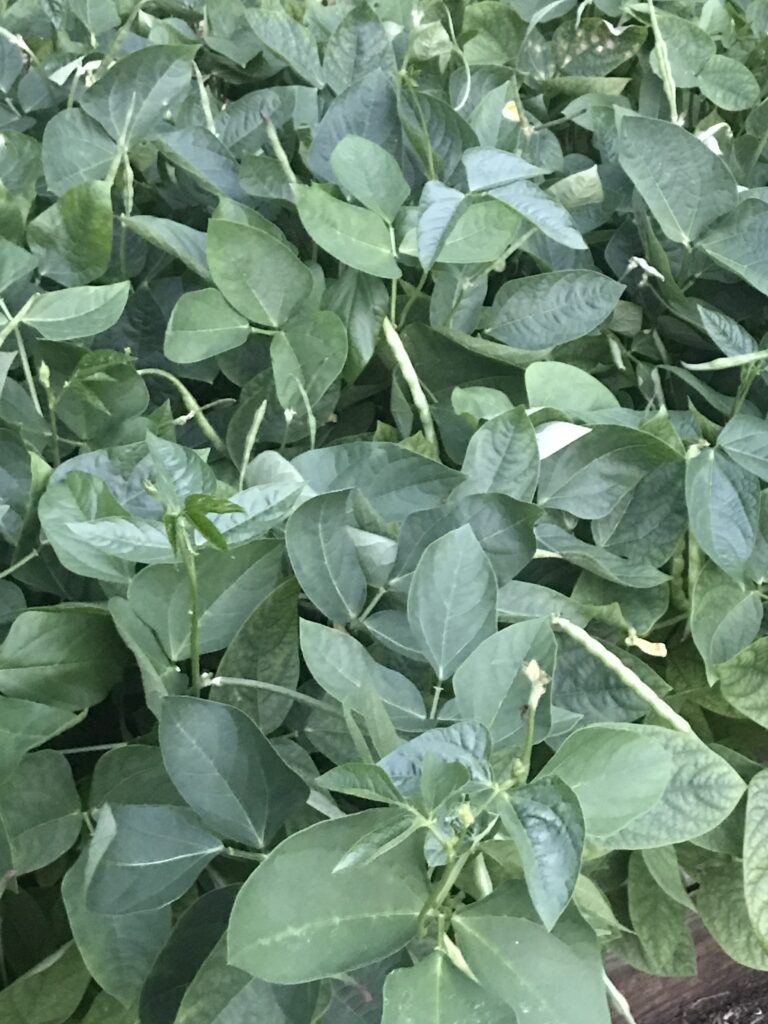
When the heat starts taking a toll on other vegetables, Southern peas (Vigna unguiculata) just keep growing. Also called cowpeas, black-eyed peas, crowder peas, and cream peas, these legumes have been a Southern staple for centuries, thriving in hot, dry conditions where other crops fail.
Southern peas are easygoing and don’t ask for much—just full sun, well-drained soil, and occasional watering. They grow as bush or vining plants, producing pods packed with protein-rich peas that can be eaten fresh, shelled and dried, or even cooked whole as tender snap beans.
- Seeds for Purple Hull Peas- Knuckle Purple Hull peas are named for large purple hulls filled with cowpeas that have a green color with a purple “eye” when fresh….
Beyond their value as a food crop, Southern peas are also natural soil builders. As legumes, they fix nitrogen in the soil, improving fertility for future plantings. Many gardeners use them as a cover crop to enrich the soil while producing a reliable harvest at the same time.
Plant Sweet Potato: For a Bountiful Harvest This Fall
April is the also the perfect time to plant sweet potato and boniato slips. These heat-loving root crops thrive in the rising temperatures and longer days of spring, giving them plenty of time to establish before summer’s peak growth season.
Unlike traditional seed-planted crops, sweet potatoes and boniatos are grown from slips—small rooted cuttings that quickly take off once planted in warm soil.
You can grow your own sweet potato slips but get started as soon as possible in order to give them enough time to produce a crop by December. Sweet potatoes are perennial in Florida, but if they’re still small by winter, they’ll go dormant. You can leave them till spring, but they can get woody if left too long.
One of the best things about planting sweet potatoes and boniatos is how little maintenance they require. Once they start growing, their sprawling vines act as a natural weed barrier, covering the ground and keeping moisture in the soil.
They don’t need much fertilizing, and by late summer or early fall, you’ll be digging up a generous harvest of delicious, nutrient-packed tubers.
Time to Plant Winter Squash in April in Florida
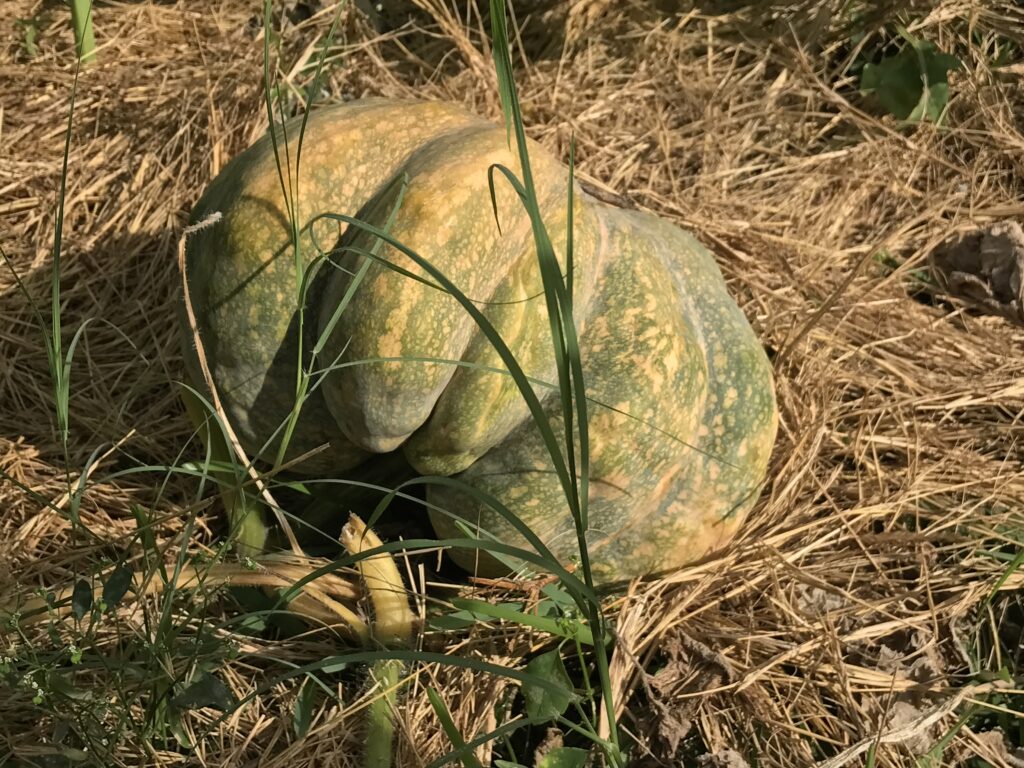
April is prime time for planting winter squash in Central Florida, especially heat-loving varieties like Calabaza and Seminole pumpkin.
While the name “winter squash” might make you think they belong in cooler weather, these varieties actually thrive when planted in spring and grown through the long, hot summer. That’s just when they’re perfect for eating.
The name “winter squash” refers to their amazing shelf life. You can keep a ripe, well-cured pumpkin for several months in a cool, dark storage room — all winter long.
Calabaza Squash: The Tropical Powerhouse
Calabaza squash (Cucurbita moschata) is a favorite in Latin American and Caribbean cuisine, known for its deep orange flesh, rich flavor, and resistance to pests and diseases. It thrives in Florida’s heat and humidity, producing sprawling vines that need plenty of space to roam.
The squash itself comes in various shapes, from round and squat to elongated, but all varieties share a sweet, nutty taste that works beautifully in soups, stews, and roasted dishes.
Seminole Pumpkin: Florida’s Native Squash
If there’s one squash perfectly suited to Florida’s climate, it’s the Seminole pumpkin. Grown by the indigenous Seminole people for centuries, this hardy squash is practically indestructible. It shrugs off heat, humidity, drought, and even pests that bother other squash varieties.
The fruits are typically round, with tan or orange skin, and have a dense, sweet flesh similar to butternut squash. Seminole pumpkins store exceptionally well, making them a great choice for gardeners who want a reliable, long-lasting harvest.
Butternut Squash: Sweet, Smooth, and Reliable
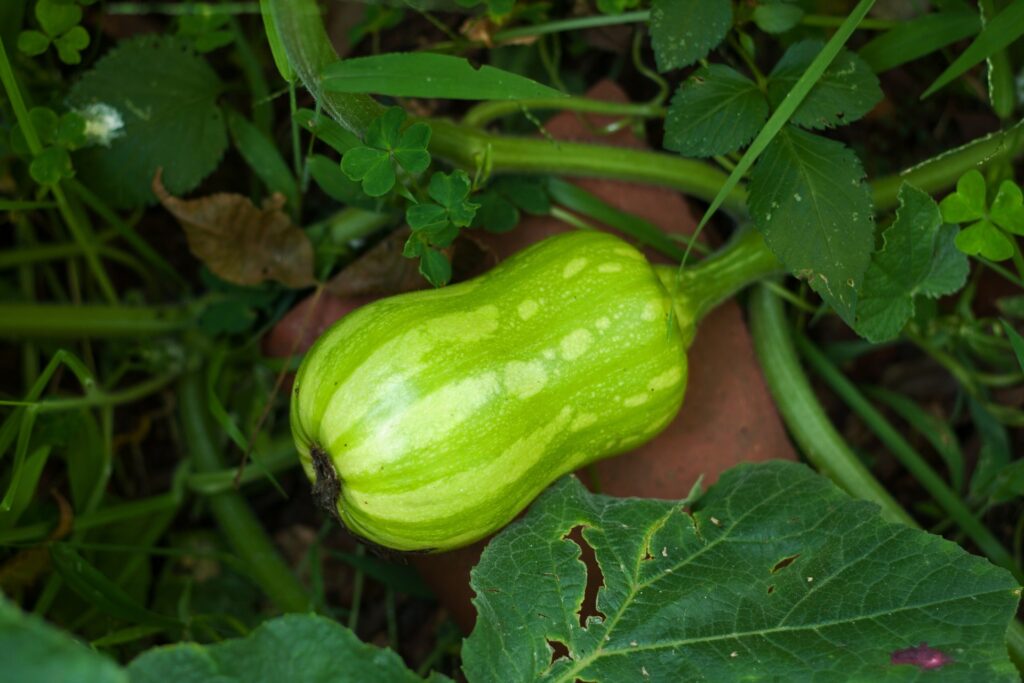
Butternut squash is another great choice for Florida gardens in April. While it may not be as pest-resistant as Seminole pumpkin or Calabaza, it makes up for it with its smooth, easy-to-peel skin and rich, creamy texture.
Butternut squash is excellent for roasting, pureeing into soups, or even using in baked goods. Just like the others, butternut squash needs plenty of space, full sun, and warm soil to thrive.
Pigeon Peas the Permaculture Paragon of Survival Gardening
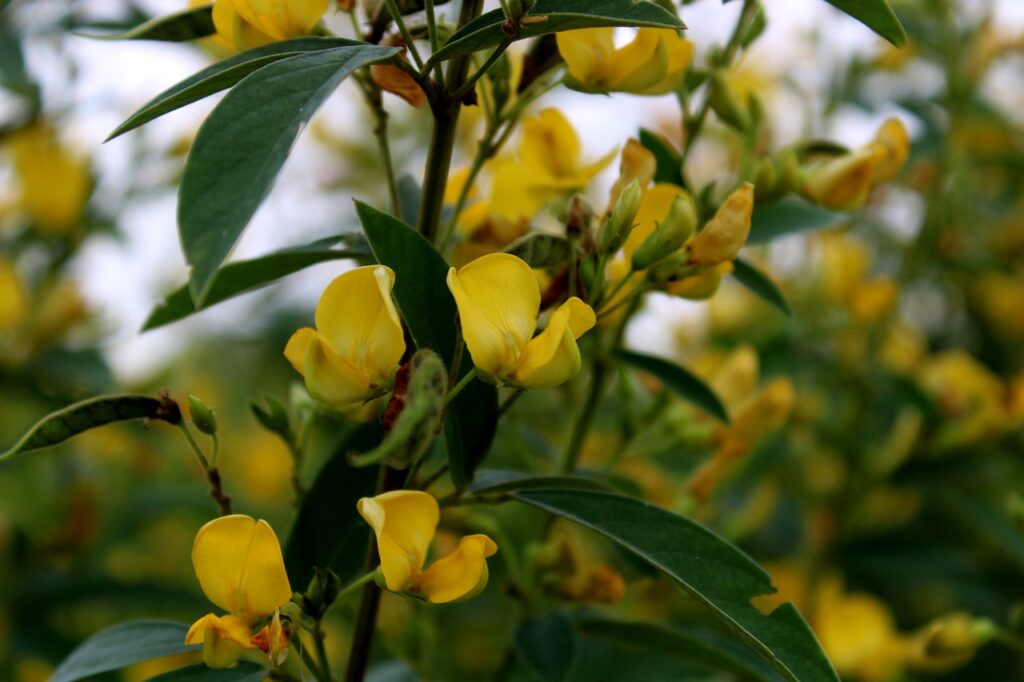
April is a great time plant pigeon peas (Cajanus cajan), a hardy, drought-tolerant legume that thrives in Florida’s warm climate. These perennial bean bushes can grow 10 feet high, and their cheerful yellow blooms drive pollinators bonkers.
Since they’re perennials, you can plant them nearly any time in Florida, but April and May are the last months to plant in time for a really big crop at harvest time. That’s just my experience. There are faster maturing varieties you can find for sale online.
These peas grow well in sandy soils and are a staple in many Caribbean and South Asian dishes. Not only do you get delicious peas but also nitrogen-fixing benefits for your soil. The plants can handle the heat and are relatively low-maintenance, making them perfect for Florida gardens.
Edible Hibiscus Varieties for Florida Gardens
Another fun and flavorful addition to your garden this month is edible hibiscus. Florida’s climate is ideal for cultivating various edible hibiscus species, each offering unique culinary and ornamental benefits. Here are some noteworthy varieties:
Roselle (Hibiscus sabdariffa)
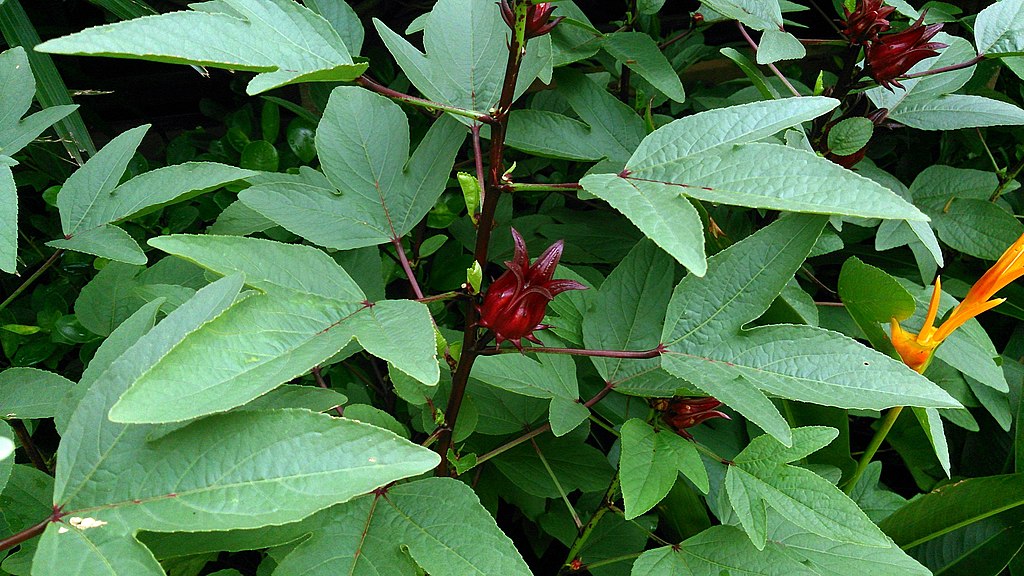
Known for its tangy, cranberry-like flavor, the flowers and calyxes of Roselle are perfect for making teas, jams, and even sauces.
This tropical plant loves Florida’s climate and adds a splash of color to the garden, with its vibrant red flowers. Plus, it’s an easy-to-grow perennial that thrives in the heat, offering both beauty and culinary delight to your garden.
Long Leaf Edible Hibiscus (Abelmoschus manihot)
Also known as the “Salad Tree,” this plant thrives in Florida’s USDA zones 9-11. It produces vibrant foliage and flowers, reaching heights of 10-12 feet. It’s very nutritious, and the leaves have a tart, rhubarb-like flavor, suitable for cooked dishes or fresh salads.
Cranberry Hibiscus (Hibiscus acetosella)
Renowned for its deep burgundy leaves and pink-red flowers, this variety is both visually striking and edible. The leaves and calyces (the cup-like structures beneath the flowers) impart a tangy flavor, ideal for teas, juices, and salads.
Hot Weather Herbs to Plant in April in Florida
April is the perfect time to plant out your herb garden here in Florida. Many of the most flavorful culinary herbs that thrive in the heat. Here are some excellent options for Florida’s hot, humid climate:
Cumin
Cumin thrives in hot, dry conditions, making Florida’s summer weather an ideal environment for this spice. Known for its earthy, warm flavor, cumin is a key ingredient in many cuisines, including Indian, Middle Eastern, and Mexican.
It’s a bit of a long-growing herb, so plant it early in April, and be patient — it typically takes several months to mature. Its seeds are harvested for use in both cooking and spice blends.
Ginger
Ginger loves the tropical Florida heat, making it a perfect addition to your garden. It requires plenty of moisture, so be sure to keep the soil consistently damp but not soggy. Harvest the rhizomes, or underground stems, to use in cooking, teas, and making .
Ginger adds a zesty, spicy kick to dishes, from stir-fries to baked goods, and is great for soothing an upset stomach.
Mexican Tarragon
Mexican tarragon (Tagetes lucida) is an herb that adds a bold, anise-like flavor to dishes. Unlike regular tarragon, Mexican tarragon is more heat-tolerant, making it ideal for Florida’s climate.
It’s often used in Mexican and Southwestern cooking, especially in sauces, salsas, and meat dishes. Plus, it has lovely yellow flowers that attract pollinators, adding both beauty and function to your garden.
Turmeric
Turmeric, with its vibrant golden-yellow rhizomes, is another tropical herb that thrives in Florida’s warm, humid conditions. It requires rich, well-draining soil and a lot of water, but the effort is well worth it for the health benefits and bold flavor it provides.
Turmeric is commonly used in curries and teas, and its active compound, curcumin, has anti-inflammatory and antioxidant properties. Harvesting your own fresh turmeric rhizomes is as satisfying as it is flavorful.
Basil
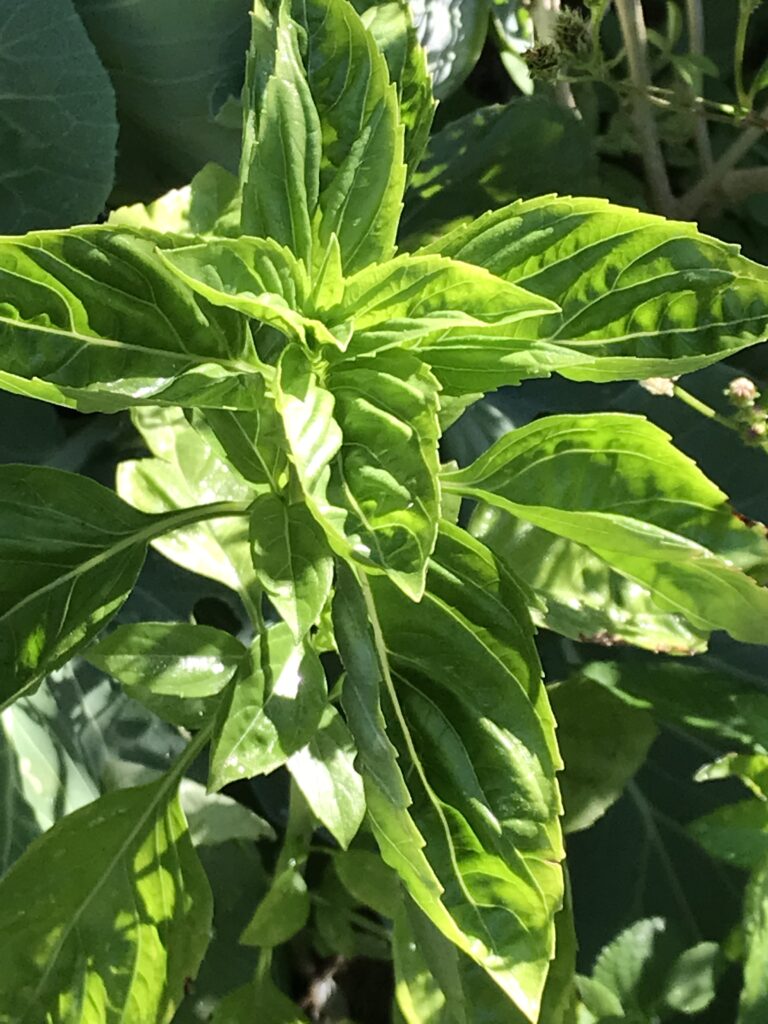
Basil loves the heat and sunshine of Florida, making it a perfect addition to your herb garden. Whether you’re growing sweet basil for pesto or Thai basil for its peppery kick, this herb will flourish in the warm temperatures of spring and summer.
Like cucumbers, basil plants will grow fast and furious and tend to bolt quickly in the heat. So either keep your basil trimmed regularly or plant out in succession.
Lemongrass
Lemongrass is a tropical herb that thrives in Florida’s hot, humid climate. It’s perfect for adding a citrusy zing to teas, curries, and even soups. With its tall, grass-like stalks, it also makes a lovely ornamental addition to the garden.
Oregano
This hardy herb is known for its ability to withstand the Florida heat. Whether you prefer the Mediterranean variety or Mexican oregano, both are well-suited to our hot summers and add bold, savory flavors to a variety of dishes.
Note that oregano can suffer from flooding, so make sure to plant in sandy, well-draining soil on a high-spot in the garden. Alternatively, you can keep it in containers — terra cotta planters provide the best conditions for Mediterranean plants.
Rosemary
Rosemary is another robust, sun-loving herb that thrives in Florida’s heat, offering both culinary and ornamental value. Its woody fragrance and needle-like leaves make it a favorite in Mediterranean cuisine, and it can withstand dry conditions once established.
Rosemary is another culinary herb that requires elevation in the garden. Summer downpours can drown them, resulting in a quick and dramatic plant death. Again, terracotta pots are a savior for any plant that needs more arid conditions.
Mint
Mint loves warmth and is less touchy about excess moisture. I know a lot of gardeners say it can spread quickly. They recommend keeping it in pots to keep it from overtaking your garden.
I’ve never had that happen in the 30+ years I’ve been gardening in Florida.
Never.
If the summer heat doesn’t kill it dead before it can spread, the spring dry season keeps it from thriving.
Honestly, the best reason for keeping it in containers is to keep the poor things alive through the worst extremes of our climate.
With the right containers, however, you can have a thriving collection of mint plants to add to use in cooking, confections, tea, and making extracts. Place in the shady spots of the garden and use pot trays to ensure adequate moisture.
Plant Heat Resistant and Fast-Cropping Vegetables in April in Florida
Now that we’ve got those reliable staple foods out of the way, let’s look at some seasonal fruits and vegetables to plant in April in Florida.
Beans
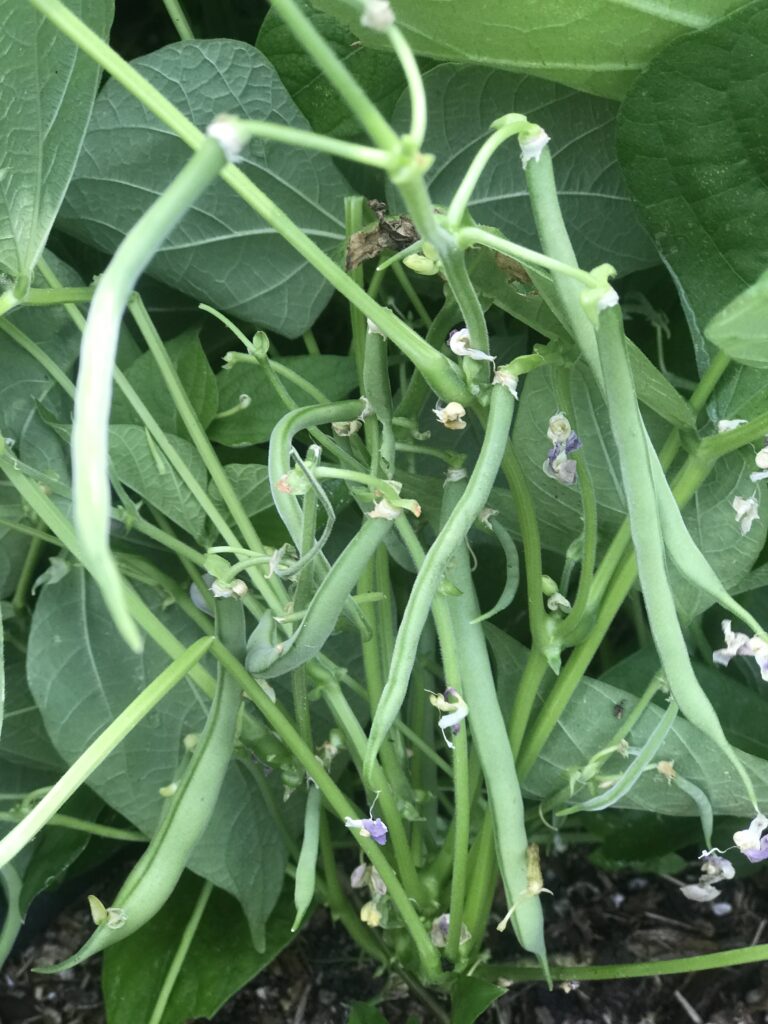
April is a great time to plant the last crop of beans of spring. If you haven’t already, now’s the time to get pole beans and bush beans in the ground.
I personally choose fast-maturing bush beans this late in the spring. They will produce prolifically in one or two easy to pick crops within 6-8 weeks — before the heat takes over.
But the real star of the show this month? Yardlong beans.
Yardlong beans are the ultimate heat-loving climber.
April marks the start of yardlong bean season. (Vigna unguiculata subsp. sesquipedalis) This is a moment worth celebrating if you love a high-yield, low-maintenance crop. Originally from Southeast Asia, these beans are built for Florida’s relentless sun and humidity.
Unlike traditional green beans, yardlong beans grow fast and furious but need hot weather to really thrive. They produce sprawling vines that need a trellis or support system to keep them off the ground.
In just a couple of months, they’ll start pumping out impressively long, slender pods — often reaching 18 inches or more — that dangle in pairs like green or red noodles swaying in the breeze.
Their flavor is a bit different from regular green beans—milder, slightly nutty, with a hint of sweetness—and they have a crisp-tender texture that holds up beautifully in cooking.
A staple in many Asian cuisines, yardlong beans are perfect for stir-fries, sautés, curries, and soups. They have a knack for soaking up flavors. Use garlic and soy sauce for Asian inspiration, or coconut milk and nutmeg for a taste of the Caribbean. A quick toss in olive oil with salt and pepper and garlic provides an Italian taste profile.
Hot Weather Fruits and Vegetables to Plant in April in Florida
April is also a good time plant melons in Florida. With rising temperatures and long sunny days, these heat-loving vines will take off. Cantaloupe, honeydew, and watermelon all thrive in Florida’s warm climate, but each has its own personality in the garden.
Cantaloupe: Sweet and Musky
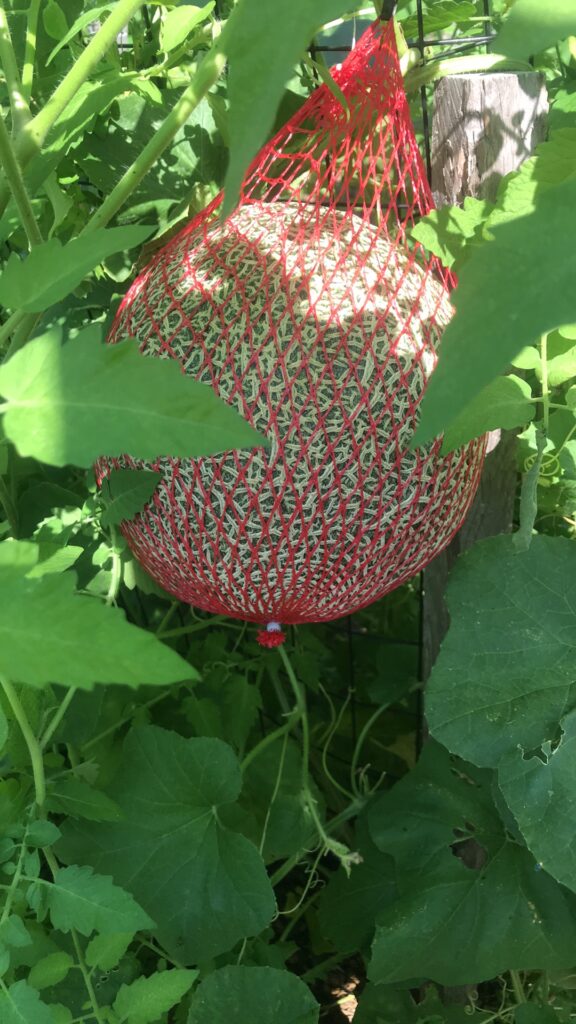
Cantaloupe (Cucumis melo var. reticulatus) is a fast-growing melon that loves full sun and well-draining soil. The vines produce round, netted fruits with orange, fragrant flesh that’s packed with natural sweetness.
Give them plenty of space, regular watering, and good air circulation to keep powdery mildew at bay. I personally trellis all my melons if size allows, and you can support cantaloupes with leftover net bags used for onions and citrus.
Honeydew: Smooth, Cool, and Refreshing
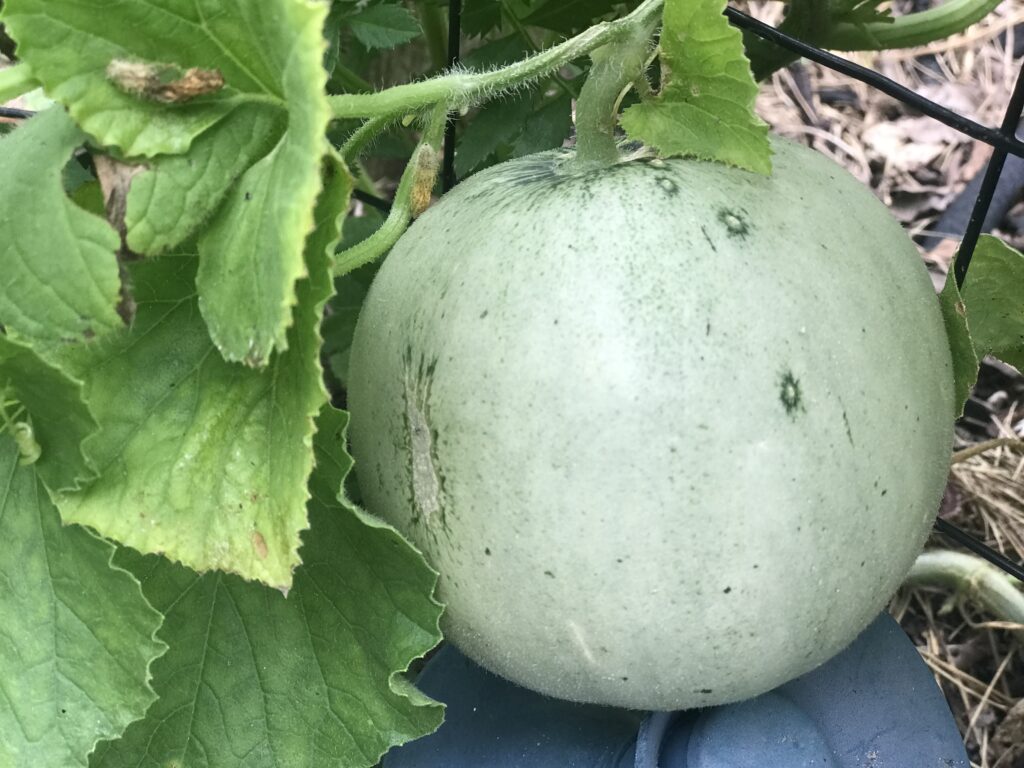
Honeydew melons (Cucumis melo var. inodorus) are similar to cantaloupes but have smooth, pale green skin and firmer, subtly sweet flesh. They need the same growing conditions—full sun, warm soil, and plenty of room to spread.
Unlike cantaloupes, honeydews don’t “slip” off the vine when ripe, so you’ll need to check for a creamy yellowish hue on the skin and a slightly soft blossom end to know when they’re ready to harvest.
Watermelon: The Ultimate Summer Treat
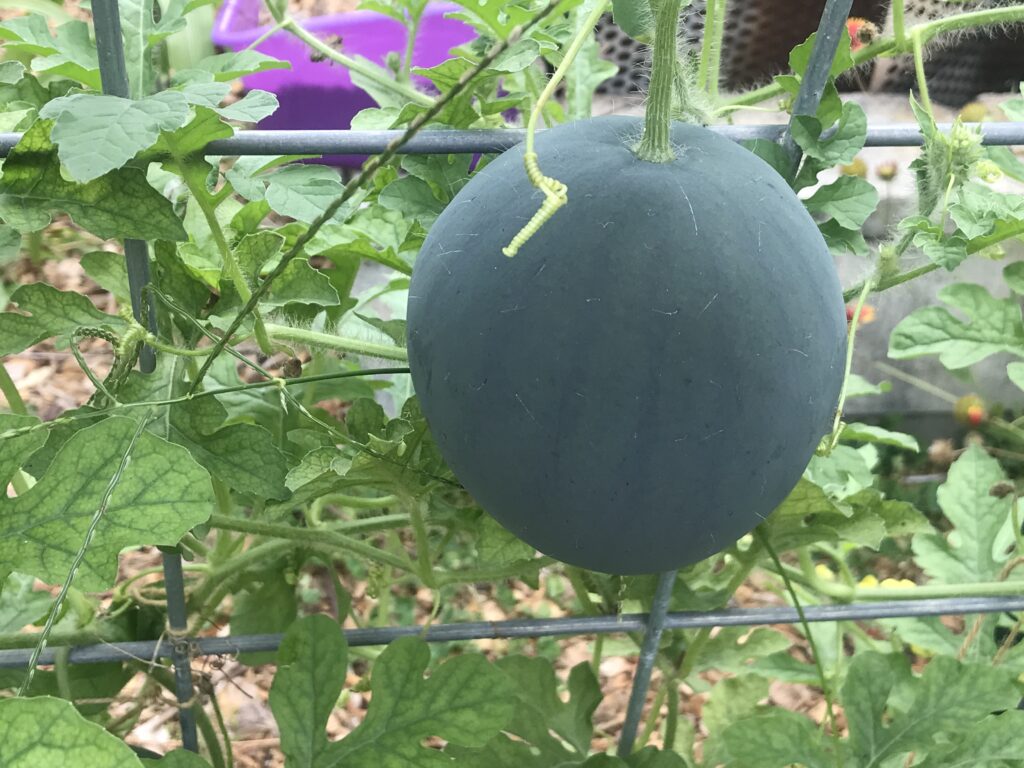
Most watermelons (Citrullus lanatus) need even more space than cantaloupes or honeydews, but they’re worth it. These vines stretch far and wide, producing large, juicy fruits that are the ultimate Florida summer refreshment.
If you don’t have the garden space for growing big watermelons, you can plant personal-sized varieties. Again, I recommend trellising. Sugar Baby Watermelons are my favorite. They take up little space when trained on a support, and they grow and ripen quicker than full-size varieties.
Watermelons love the heat but require consistent watering, especially while the fruits are developing. To know when they’re ripe, look for a dried tendril near the fruit’s stem and a yellow spot where the melon has been resting on the ground.
Perfect for Florida Summers
All three melons do best in sandy, well-draining soil with plenty of organic matter mixed in. Give them deep, infrequent watering to encourage strong root growth, and keep an eye out for pests like aphids and cucumber beetles. By planting in April, you’ll be enjoying sweet, homegrown melons just in time for the peak of summer.
Get Cucumbers and Summer Squash in the Ground
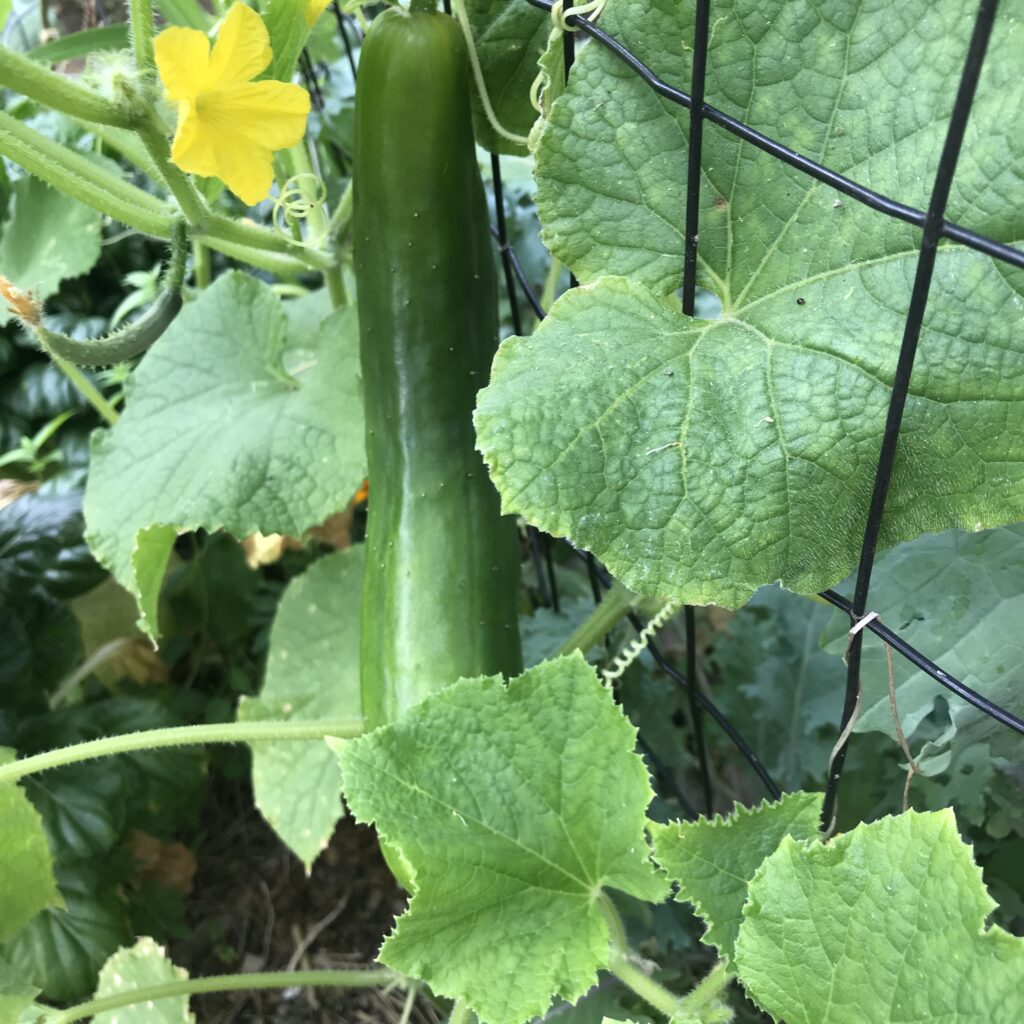
If you want fresh, crisp cucumbers and tender summer squash, now’s the time to plant them in Central Florida. These fast-growing plants thrive in warm weather, but there’s one important step you don’t want to skip—trellising!
With Florida’s rainy season on the horizon, keeping your cucumbers and squash off the ground will help prevent disease, reduce pest problems, and make harvesting a whole lot easier.
Cucumbers: Crisp, Refreshing, and Quick to Produce
Cucumbers (Cucumis sativus) grow fast in Florida’s spring heat, producing fruit in as little as 50 days. Whether you prefer slicing cucumbers for fresh eating or pickling varieties for homemade pickles, they’ll all benefit from vertical growing.
You can get a longer cucumber harvest by sowing starts in succession. Cucumbers live fast and die young, so use generously sized cell trays (even better — use soil blocks) to sow cucumber seeds for planting out every three weeks for a continuous harvest.
You can start them as early as January and keep planting them out until May if you’re willing to cover during cold nights and provide shade cloth in May and June. This is even easier to do if you grow them in containers.
Summer Squash
Zucchini and yellow squash (Cucurbita pepo) are garden favorites, but Florida’s humidity can be tough on them. Like cucumbers, summer squash plants benefit from support—especially vining varieties.
Training them onto a trellis or staking them upright keeps the leaves dry, helps prevent fungal issues, and makes it harder for pests like squash bugs to hide.
With Florida’s rainy season approaching, ground-level vines can quickly become a soggy mess. Wet foliage leads to fungal diseases, and damp soil invites slugs, pill bugs, and other pests that love to snack on tender squash and cucumbers.
Only For the Brave: Time to Plant Sweet Corn or Dent Corn
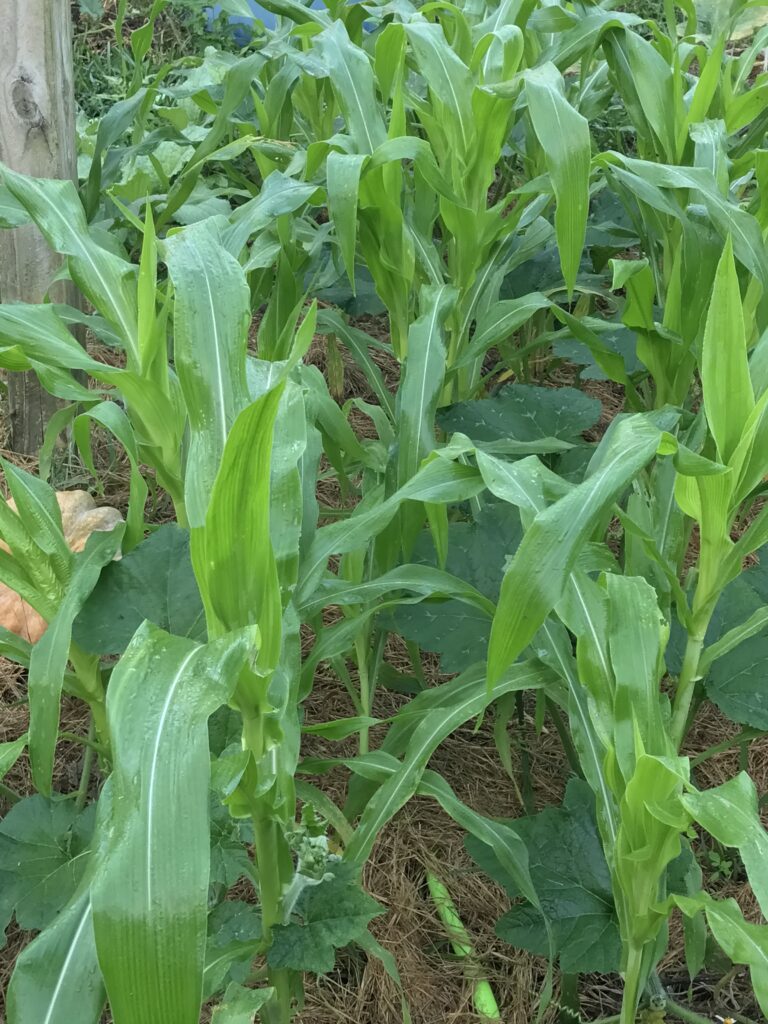
April is the time to plant sweet corn or dent corn in Florida, but this crop isn’t for the faint of heart. Corn requires fertile, well-draining soil, which can be a challenge in Florida’s sandy ground.
It also doesn’t love being too wet, so managing moisture—especially with the state’s rainy season on the horizon — can be tricky.
In Florida’s heat, pests are another obstacle. Corn is prone to issues with aphids, corn earworms, and even wildlife like squirrels. Regular monitoring and pest control measures will be essential if you want to keep your crop safe.
While I will not be planting sweet corn this April, I wanted to mention it, since it’s the last month of spring worth the effort. Fall and winter is usually easier, but if you have the room and time to pamper them, it’s often worth it.
Keep plenty of bt (Bacillus thuringiensis) on hand and don’t get lazy about your spraying schedule if you plan to get to eat any of it.
Pepper and Tomato Plants to Get Into the Ground in April
April is the last month of spring to plant pepper and tomato plants in Florida, but it’s important to be mindful of the heat when choosing varieties.
Peppers (Chili or Sweet)
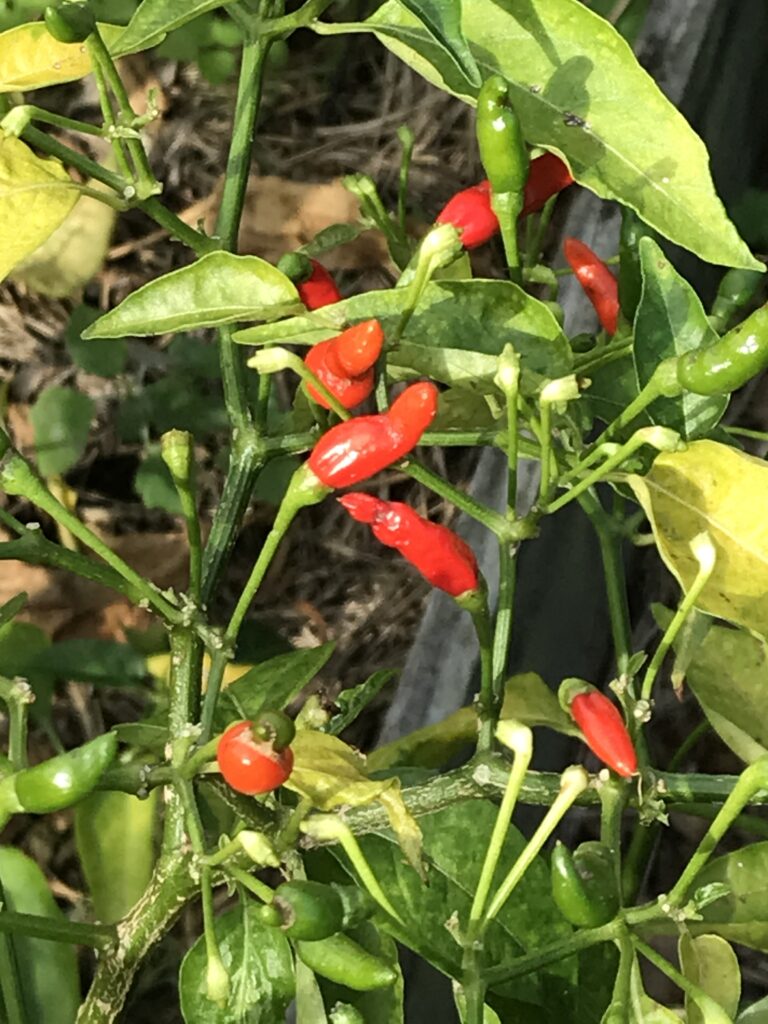
Whether you’re growing spicy chili peppers or sweet bell peppers, April is last month to put pepper plants into the garden until fall. Note that it’s a bit late to grow them outdoors from seed — although you could start them indoors from seed and plant out in August.
Peppers love heat and sunshine, making them a great choice for Florida’s warm climate. But they easily scorch in the hot summer sun. But with the right care, they’ll deliver a bountiful harvest.
Shade cloth during the hottest hours of the day can help keep them protected, while a thick layer of hay or other organic mulch can keep their roots cool and hydrated.
Tomatoes for Florida Summers
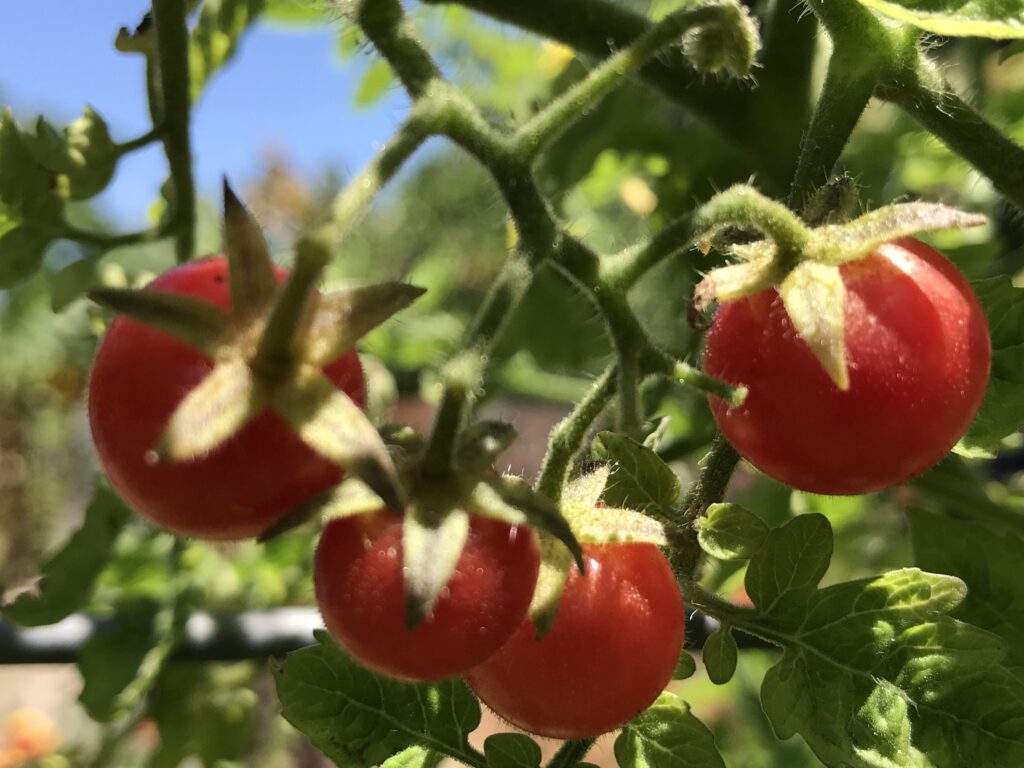
For those eager to get their tomatoes going, cherry tomato plants are your best bet. Regular slicing or saucing tomatoes will definitely start to struggle in the Florida heat come June. Even more frustratingly, they require lower temperatures at night to set fruit. So, even if you keep them healthy and pristine — free from pests or blight — they won’t set fruit as nighttime temps climb into the mid 70s.
But cherry tomatoes are smaller, more heat-tolerant, and perfect for Florida’s climate.
You might even want to consider Everglades tomatoes, a variety specifically adapted to Florida’s conditions. They’re North America’s only “native” tomatoes, having become naturalized to Florida many hundreds of years ago.
Every other tomato on the market today was developed in Europe from South American varieties. However, Everglades were brought directly to Florida from Peru, and they’re pretty much the same species that still grows in the Andes today.
In fact, Everglades tomatoes are a distinct species (Solanum pimpinellifolium) from even the heirloom varieties we grow in the U.S. (Solanum lycopersicum).
These tiny, hardy tomatoes are incredibly resilient and prolific, producing fruit through the hottest months of summer and often through winter, as well.
And while they’re too tiny to make a BLT, it won’t take long until you have several gallons of these little gems that make the world’s best barbecue sauce.
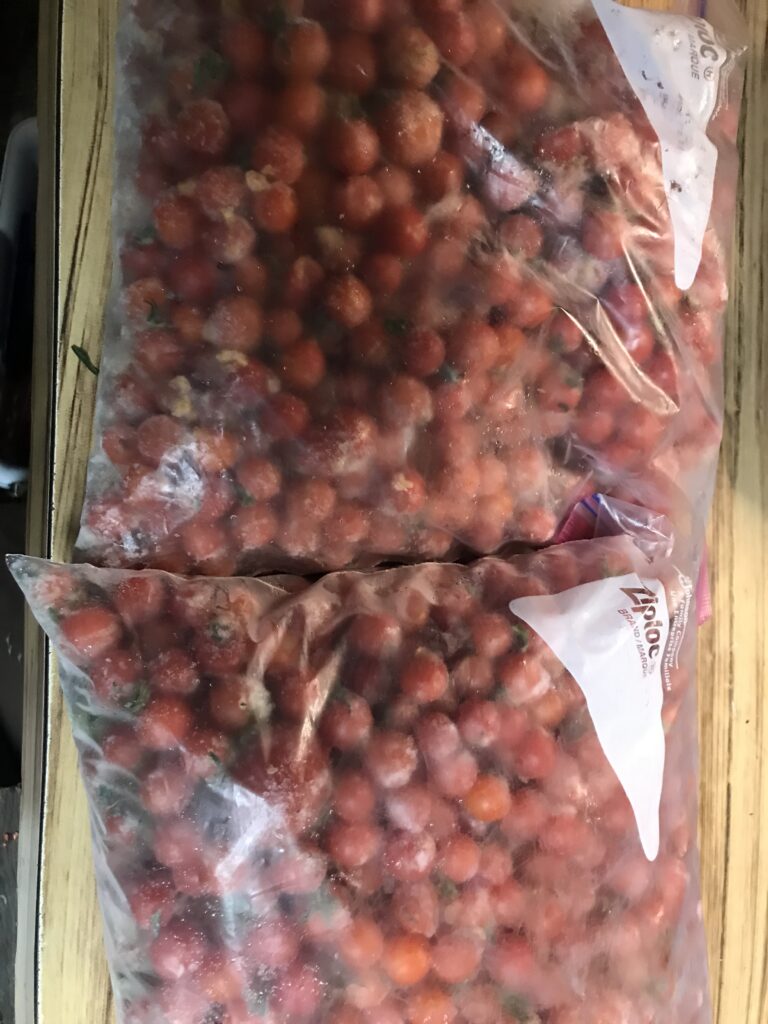
Time to Plant in April in Florida Before the Summer Heat Kicks In!
April is your last big window to get warm-season crops in the ground before Florida’s summer heat makes gardening a real challenge. The longer you wait, the tougher it gets—so grab your seeds, slips, and transplants and get growing!
With the right choices, your garden will be thriving well into the hotter months, rewarding you with fresh veggies, herbs, and fruits.
Don’t let the Florida sun catch you off guard—plant now and enjoy the harvest before the real heat sets in!
Last update on 2025-06-06 / Affiliate links / Images from Amazon Product Advertising API
This product presentation was made with AAWP plugin.










